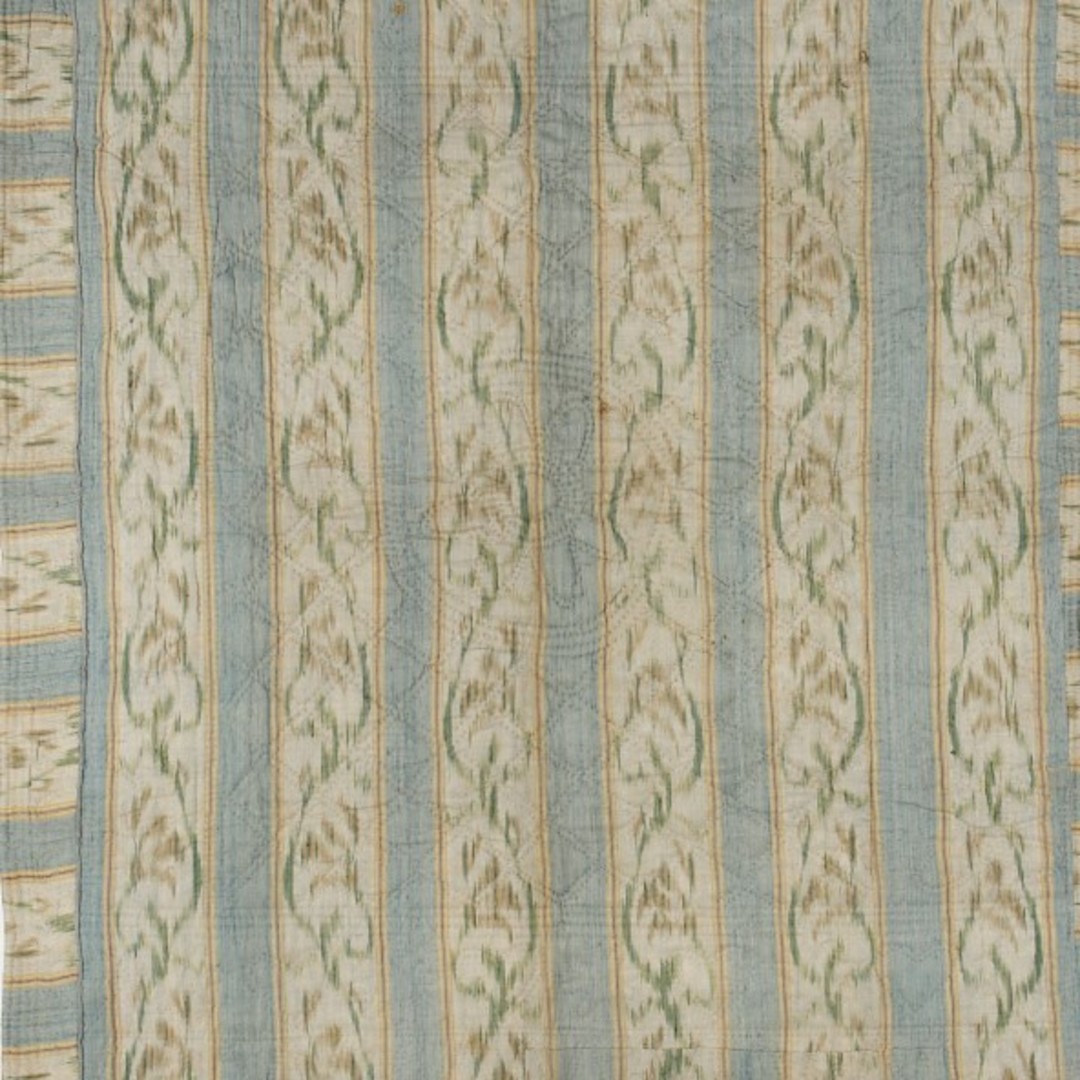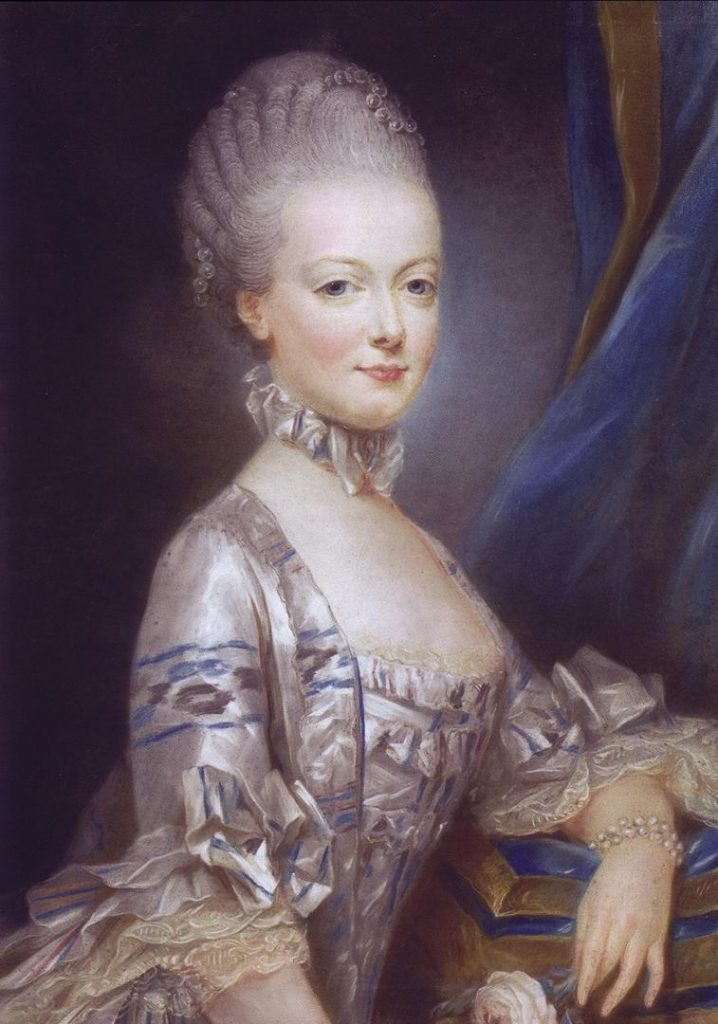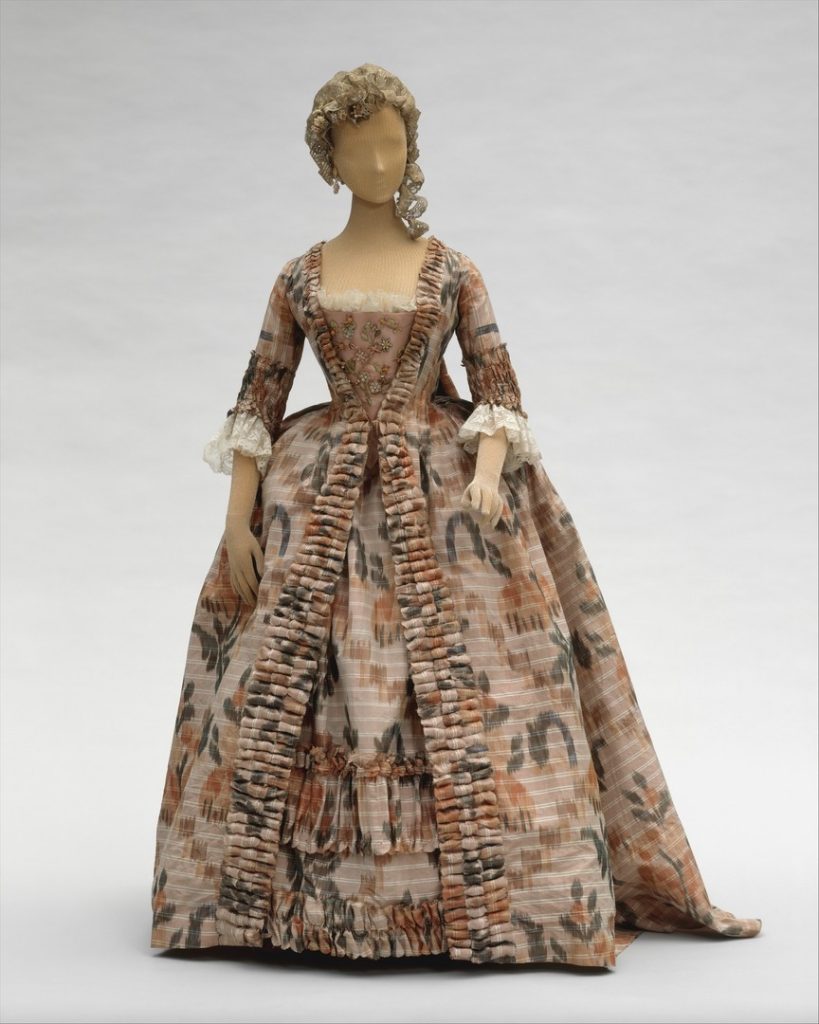Inside SAM’s World of Compelling Cloth: French Coverlet

While many of us source our coverlets—more commonly referred to today as a bedspread—from big-name companies, in 18th century France these objects were typically handwoven and dyed with meticulous precision by local artisans. They often featured intricate embroidery details that took hours to craft. In the sixth stop of our smartphone tour of Ikat: A World of Compelling Cloth at SAM, we take a close look at a French coverlet from the late 18th century and explore its fabric, known as Chiné à la branche. Browse all seven stops of our free smartphone tour from the exhibition’s galleries before it closes on Monday, May 29 or in your own time here.

How was Chiné à la branche used?
European ikat fabrics were incredibly expensive to produce, which is one of the reasons Chiné à la branche is most closely associated with royalty. Marie Antoinette had a particular affinity for the fabric, having her court clothes and palace furnishings made of various Chiné à la branche designs. The more popular designs in court were soft, blurred floral patterns, which were used for everything from dresses to upholstery.

How did industrialization affect ikat?
Industrialization led to the French abandoning the slow and costly production of ikat. Rather than hand-dying individual bundles, they were able to print patterns directly onto the warp threads. The dress shown above is stylized to look like ikat, but technically does not follow the traditional ikat process.
Verbal Description of French Coverlet
This coverlet was made in the late 18th century and measures five feet, six inches tall and four feet, nine inches wide. The ikat top layer of this coverlet is made of silk and linen thread and the back is made of silk. The layers are connected by quilted embroidery. This coverlet—or, bedspread—has both the colorful print-like pattern of the weave and a textured pattern created by the quilting process that joins the ikat fabric with other layers of the piece. The backing of this bedspread is a pink silk fabric. Between the silk backing and the ikat top layer, there’s about half an inch of batting—or, filling—that would make the coverlet a more effective warming layer for a bed.
First, we’ll examine the woven pattern of the ikat, which is precise in its execution, but has an intentional blurry quality around the edges. The pattern is a repeat of vertical stripes: a powder-blue stripe about three inches wide sits next to a cream colored stripe about five inches wide. This set of stripes is repeated six times across the coverlet. Within the cream colored stripe, there’s more detail. Thin lines on both edges of the cream stripe in pale yellow, dusty rose, and black frame an abstract design of flowers.
The stems and leaves of the flowers are a soft, mossy green and run down the center of the cream stripe in alternating curved lines that are reminiscent of vines. Splashes of the same dusty rose color form the blossoms of the flowers. Both the blossoms and the stems have irregular edges that artists in France nickname ‘flambé’—or, flaming—an aesthetic that was desirable at the time. On the sides of the coverlet, there are two strips of the fabric that have been cut off and attached perpendicularly to the rest of the bedspread, making the pattern horizontal on the edges.
Now let’s focus on the quilting that joins the layers together. The quilted stitching is done in a clear thread so that the lines themselves are only visible by the indentation and texture they create on the surface of the bedspread. In the center of the piece, there is a circle surrounded by eight symmetrical petal shapes, forming a simple flower shape like a large daisy. The daisy has three rings encircling it and then diamond shapes fill up most of the coverlet until about a foot from the edges where they are boxed in. Around the diamonds, small hearts and daisies alternate in a border to the quilting.
– Lily Hansen, SAM Marketing Content Creator
Photo: French Coverlet, late 18th century. Collection of David and Marita Paly. Silk, warp ikat, linen weft, quilted embroidery. 66 in. x 57 in. Marie Antoinette, Archduchess of Austria by Joseph Ducreux. 1769. Pastel on parchment. © Château de Versailles. Robe à la Française, French, 1760–70, Silk. © The Metropolitan Museum of Art.